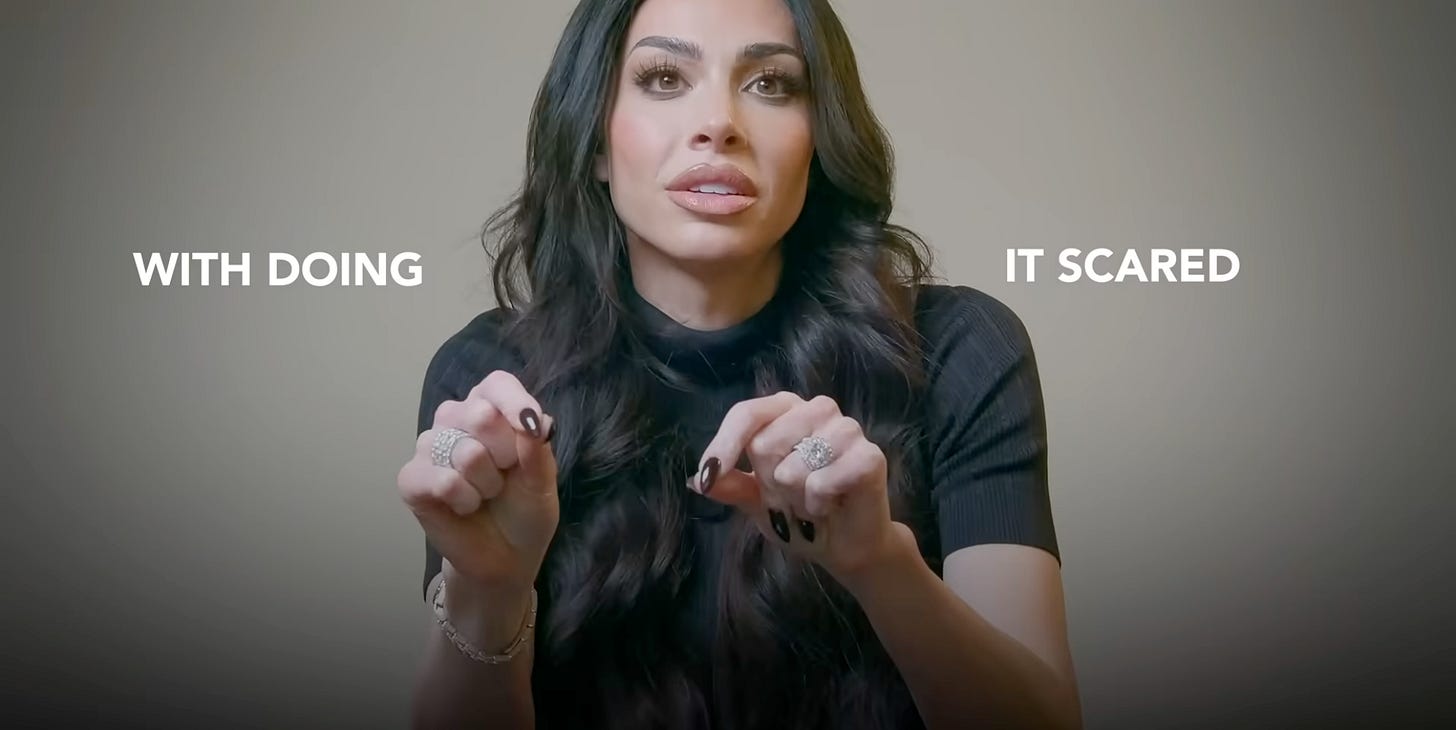How to Turn a Boring Idea into a Bold Opening Line
Most good ideas don’t sound good at first.
Today you’ll learn how to take a plain, familiar idea and say it in a way that keeps people listening.
This is a closer look at step one of the three-line framework for opening your video we covered last week:
1. Claim - A truth, idea, or position you take about how to solve a problem your audience cares about.
2. Credibility - Why you’re worth listening to.
3. Benefit - What your audience gains from the video.
The claim you make in the opening line is what drives the entire framework. Your claim needs to do two things:
Sum up the point of your video.
Capture attention and imagination.
The problem is that most raw ideas are not that exciting. But you can make your opening line more powerful.
First let’s look at what usually gets in the way.
How Openers Go Wrong
Death by small talk
The first mistake is to dance around your claim.
It takes discipline to say exactly what you mean in the opening line. Our instinct is to introduce ourselves, make small talk, explain why we exist… Sometimes the camera intimidates us into babbling like this.
But you don’t need to explain why you're here.
When someone clicks your video, they’ve already said yes to the pitch you made in your title and thumbnail. You’re not there to mingle — this is a transaction. They clicked because they want to see what you offered. So give it to them.
Just don’t overdo it...
Bold doesn’t mean loud
Some creators try to force people to care about their claim:
They say something controversial, just for the reaction.
They show up with too much energy, hoping their enthusiasm will excite people.
These are good ways to exhaust and piss off your audience.
All you need to do is this: Pick something that matters to your audience, take a clear position, and say it boldly.
The 3-million-view intro
Let’s look closer at something we touched on last week: the powerful introduction to Leila Hormozi’s video on confidence, which has now passed 3.1 million views.
Here’s how she starts:
“What if I told you that confidence has nothing to do with feeling ready—and everything to do with doing it scared?”
The core idea here is actually much simpler:
confidence = doing it scared
That’s solid advice, but not something that makes three million people watch a video.
The idea becomes powerful because of how she frames it.
How to build a bold claim
Hormozi does four things to spice up her basic claim that “confidence = doing it scared.” Before I name them, let’s see them in action.
Look at the sentence below, and notice how it feels stronger as each technique is applied:
Here’s what made this work:
1. Contrast
The idea hits harder when it’s contrasted against a common - and rejected - belief: “Confidence means being ready.”
2. Order of Claims
She puts the rejected idea first, which creates tension. (“If it’s not that… then what?”)
3. Absolute Language
Phrases like “nothing to do with…” and “everything to do with…” make the sentence feel definitive.
4. Suspenseful setup
“What if I told you…” tells the viewer something important is coming, and makes them wonder what it is.
Other setups could be:
“Few people know this…”
“This might surprise you…”
“You’re not gonna like this, but…”
Try it yourself
Take an idea you believe in — especially one that you think is too obvious to share. Build on it using these four techniques, and watch it get sharper.
Remember that this is not about tricking anyone. The point is to make helpful ideas land so people can remember and use them.
You’ve probably had the experience where you heard something a hundred times, but then one person said it a certain way and it suddenly clicked. That’s what this is about.
Coming up
In the next post, we’ll learn to establish credibility without sounding self-important. If you don’t want to miss it, subscribe here:
If this was useful, feel free to share it with someone who makes videos that teach or share ideas.
More soon,
Peter
Keep creating.



Comprehensive breakdown
Thanks for this